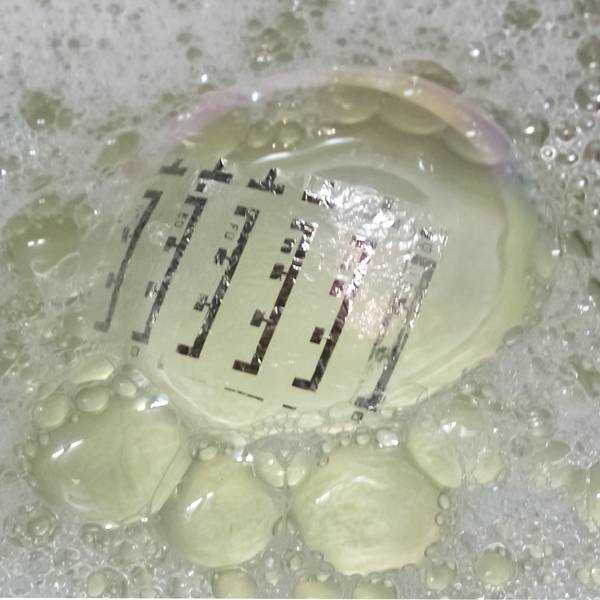
Scientists from Germany and Japan have developed a new magnetic sensor, which is thin, robust and pliable enough to be smoothly adapted to human skin, even to the most flexible part of the human palm. The achievement suggests it may be possible to equip humans with magnetic sense.
Magnetoception is a sense which allows bacteria, insects and even vertebrates like birds and sharks to detect magnetic fields for orientation and navigation. Humans are however unable to perceive magnetic fields naturally. Dr. Denys Makarov and his team have developed an electronic skin with a magneto-sensory system that equips the recipient with a “sixth sense” able to perceive the presence of static or dynamic magnetic fields. These novel magneto-electronics are less than two micrometers thick and weights only three gram per square meter; they can even float on a soap bubble.
The new magnetic sensors withstand extreme bending with radii of less than three micrometer, and survive crumpling like a piece of paper without sacrificing the sensor performance. On elastic supports like a rubber band, they can be stretched to more than 270 percent and for over 1,000 cycles without fatigue. These versatile features are imparted to the magnetoelectronic elements by their ultra-thin and -flexible, yet robust polymeric support.
“We have demonstrated an on-skin touch-less human-machine interaction platform, motion and displacement sensorics applicable for soft robots or functional medical implants as well as magnetic functionalities for electronics on the skin,” says Michael Melzer, the PhD student of the ERC group led by Denys Makarov concentrating on the realization of flexible and stretchable magnetoelectronics. “These ultrathin magnetic sensors with extraordinary mechanical robustness are ideally suited to be wearable, yet unobtrusive and imperceptible for orientation and manipulation aids,” adds Prof. Oliver G. Schmidt, who is the director of the Institute for Integrative Nanosciences at the IFW Dresden.
This work was carried out at the Leibniz Institute for Solid State and Materials Research (IFW Dresden) and the TU Chemnitz in close collaboration with partners at the University of Tokyo and Osaka University in Japan.
Story Source:
The above story is based on materials provided by Leibniz Institute for Solid State and Materials Research Dresden. Note: Materials may be edited for content and length.
Journal Reference:
- Michael Melzer, Martin Kaltenbrunner, Denys Makarov, Dmitriy Karnaushenko, Daniil Karnaushenko, Tsuyoshi Sekitani, Takao Someya, Oliver G. Schmidt. Imperceptible magnetoelectronics. Nature Communications, 2015; 6: 6080 DOI: 10.1038/ncomms7080
